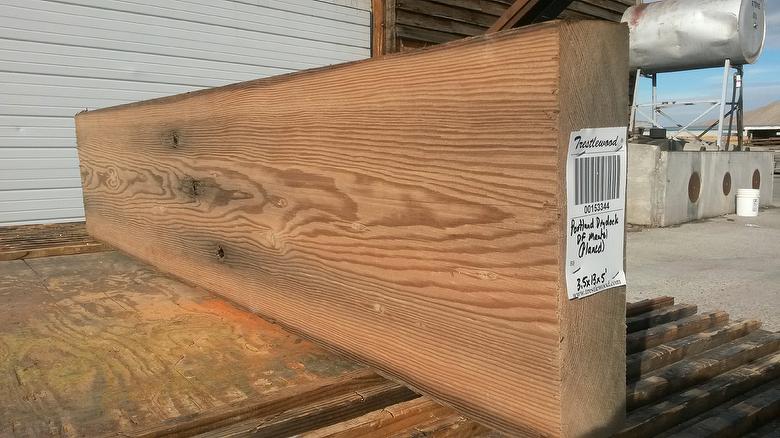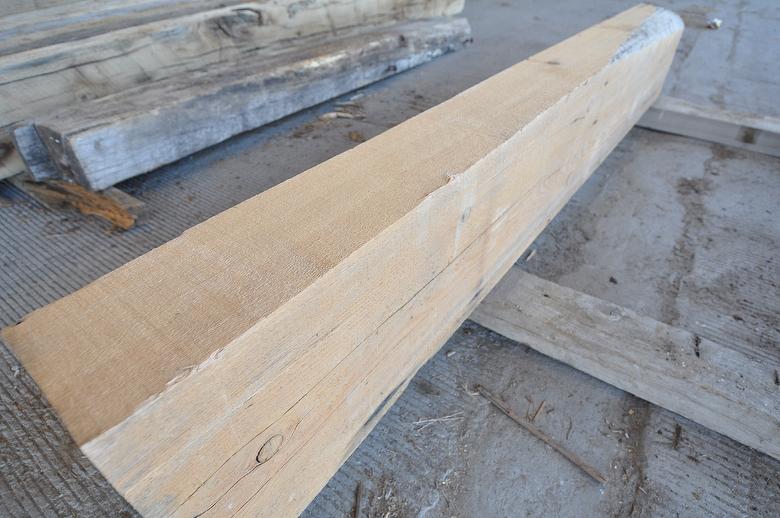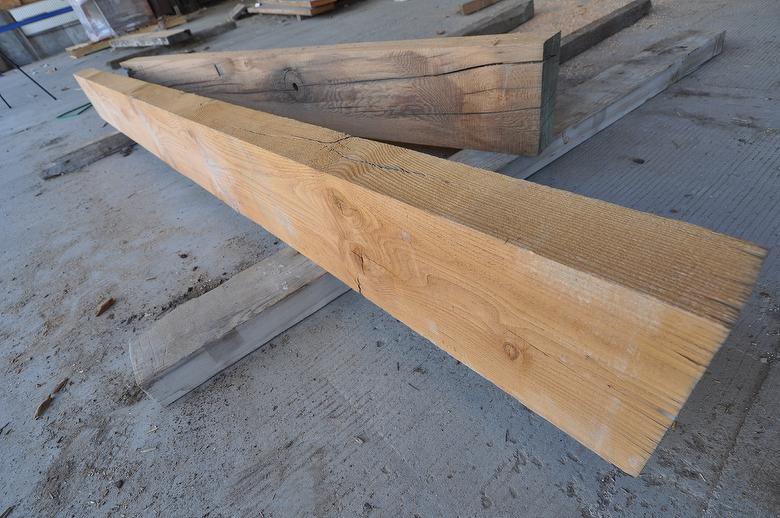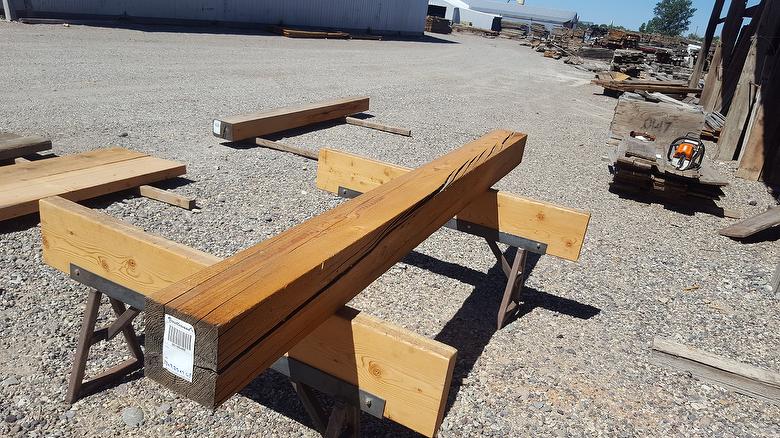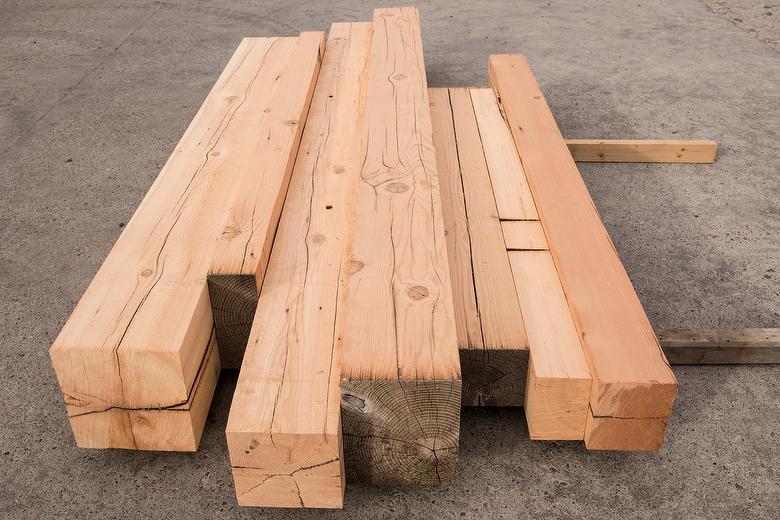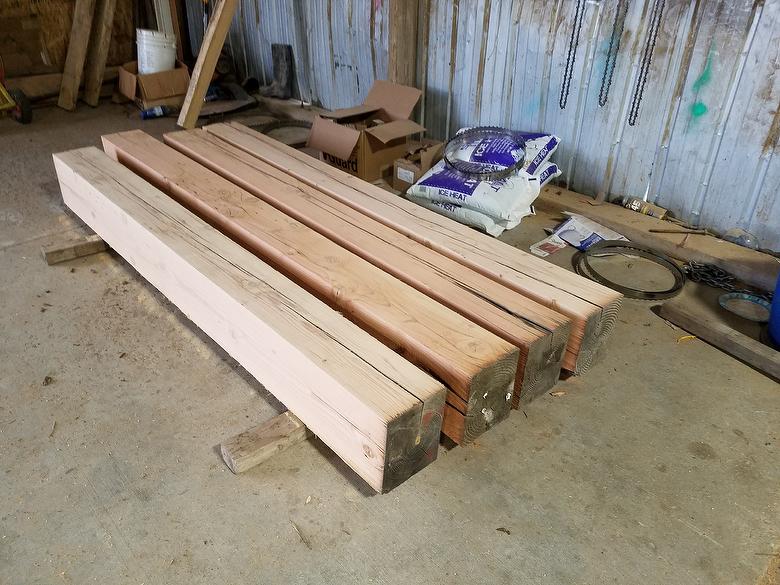Douglas Fir Resawn Mantels
Douglas Fir Resawn Mantels
reclaimed and bandsawn
Specification Sheet #2101 - Resawn Douglas Fir Timbers
Purchase Options / Specs
Request Quote
Height
Width
Length
Quantity
3-14"
3-14"
0.5 to 16'
min: 1 each
Related Productline Pages
Resawn Unfinished Mantels
Specification Sheet #2101 - Resawn Douglas Fir Timbers
Species
Primarily Douglas Fir
Source
Buildings and industrial structures from different locations in North America
HC/FOHC
Generally HC; usually moderate to very tight growth rings.
Metal
Nails, bolts and other fasteners are removed or occasionally cut flush or broken off inside the material.
Holes
Nail, bolt and other fastener holes are allowed; the quantity and size of the holes can vary widely from timber to timber, with some timbers containing no holes or only limited small nail holes and others containing frequent nail and bolt holes. Staining around nail and bolt holes is common.
Checking/Cracks
Timbers generally have a check from the heart center to one of the faces of the timber. In addition, timbers can
have surface checking and cracks, moderate butt checking and minor end splitting.
have surface checking and cracks, moderate butt checking and minor end splitting.
Moisture Content/Stability
Air-Dried
Surfacing
Band-Sawn or Planed (S4S)
Standard Dimensions
a) Cross-sections: 4x6 to 10x10; b) Lengths: to 16';
c) Target Dimensions: timbers are targeted at 1/2" under full-sawn for dimensions up to 5" and 3/4" under full-sawn for dimensions over 5"; d) Tolerances: band-sawn +/- 1/8"; planed timbers +/- 1/16".
c) Target Dimensions: timbers are targeted at 1/2" under full-sawn for dimensions up to 5" and 3/4" under full-sawn for dimensions over 5"; d) Tolerances: band-sawn +/- 1/8"; planed timbers +/- 1/16".
Available Dimensions
a) Cross-sections: depending on inventory in stock (sizes offered in the past include 20x20, 12x20, 11x23, 10x24, 15x17, others); b) Lengths: depending on inventory in stock; c) Target Dimensions: timbers are targeted at 3/4" under full-sawn; d) Tolerances: all larger timbers are cut to the stated dimensions +/- 1/8".
Weight
Typically, approximately 3 pounds per board foot
Grading
Douglas Fir resawn timbers can be graded (WLCB) upon request. Timbers are graded with exception taken for any holes. It is highly recommended that any timbers that are to be used in a structural application be graded. It is also recommended that standard size timbers be used whenever possible. Checking and holes (where metal has been removed) tend to be more pronounced in timbers wider and/or thicker than 12" than in standard size timbers.
Appearance Variation
Douglas Fir Resawn Timbers are often cut from stock coming from a variety of sources. As a result, timber characteristics can be expected to vary from piece to piece. Trestlewood believes that appearance variations (no two timbers exactly alike) are one of the selling points of this product line.







